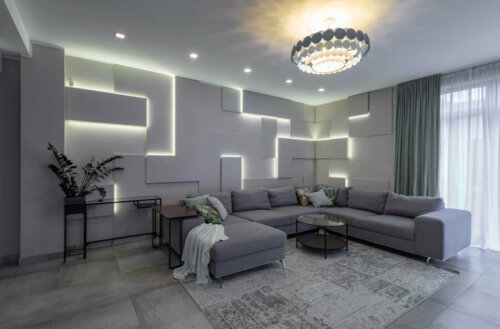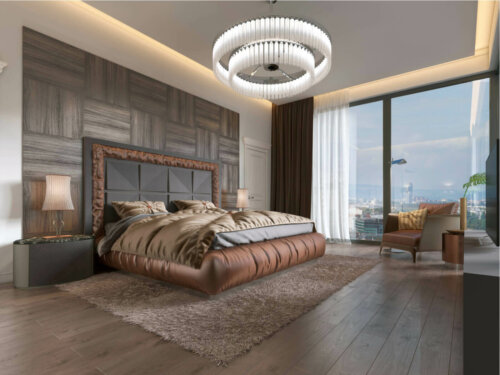How to Have Sustainable Lighting at Home

The lighting in a room is one of the most important aspects of the decor. By playing with the light, you can create warm and cozy atmospheres where you can find the right intensity to go with the colors in the room. However, you should always make sure you have sustainable lighting.
So, you should take into consideration the consumption. Nowadays, more and more households are concerned about cutting down their energy bill and the impact on the environment. Therefore, it’s important to look for solutions.
LED lights are the best bet for any home or office that aims to take care of the planet and lower costs. If you take into account that 25% of the energy consumed by a typical home comes from the lighting, it’s worth paying attention to this, don’t you think?
Tips for sustainable lighting

A tip to have a home that looks like it’s out of a magazine is the lighting. It shouldn’t be too low nor too intense. Furthermore, you must take into account the needs of each space. It isn’t the same to illuminate a kitchen as a bedroom.
However, you have to learn to control your electricity consumption to have sustainable lighting that has a positive impact on the planet and your pocket. We’ll give you some tips that’ll help you.
Objective – reduce energy consumption
When you’re thinking about the lighting of rooms, reducing energy consumption should be your goal. The aim is to have well-lit environments without wasting energy.
Instead of removing light sources, we suggest you opt for LED lighting systems. These will allow you to make considerable savings on your next light bill and will give you the option of creating unique lighting compositions.
Sustainable lighting – the lightbulbs
In addition to LED lights, there are other types of lightbulbs you can also use in the different rooms of your house: halogen and energy-saving bulbs. The latter have 70% lower consumption compared to traditional incandescent bulbs.
Although halogen lamps represent lower savings compared to incandescent lamps (about 30% more or less), their intense light makes them perfect for areas where you need strong, white lighting, such as the bathroom or kitchen.
However, LED lights are the most efficient. Furthermore, as you know, they’ve become the best option thanks to their performance. Although they’re more expensive, their lifespan is approximately 20 thousand hours, which makes the cost worth it.
Additionally, they never get hot, which makes them very safe and a great choice for any type of surface, even cabinet interiors. Finally, they’re able to cover a wide spectrum in terms of power and light depth, what more could you ask for? Check these out from IKEA.

The downside of LED bulbs
While it’s true that this lighting has become the most popular in the 21st century, it’s also highly polluting.
This was revealed by a study that concluded that the increase in light levels leads to significant light pollution. It also says that your health can be affected if you don’t respect the contrast of day and night which can affect your circadian rhythm.
Practical solutions with sustainable lighting
Take note of these practical solutions that can help lower your electricity consumption:
- Dimmers: with these, you can raise or lower the intensity of light in a room. This is great, since your needs may vary depending on what you.
- Presence detectors: an excellent alternative for transit areas such as corridors, hallways, etc. The light will only turn on when it senses someone is there.
- Solar lights: these sense darkness and when night falls, the lights are switched on. This makes them great for outdoors.
Having sustainable lighting is an easy goal that helps the planet and your pocket. You just need to choose the right bulbs and have some guidelines to facilitate the task.
At the end of the day, you’ll see the result in your light bills, not to mention that the environment will thank you for it.
The lighting in a room is one of the most important aspects of the decor. By playing with the light, you can create warm and cozy atmospheres where you can find the right intensity to go with the colors in the room. However, you should always make sure you have sustainable lighting.
So, you should take into consideration the consumption. Nowadays, more and more households are concerned about cutting down their energy bill and the impact on the environment. Therefore, it’s important to look for solutions.
LED lights are the best bet for any home or office that aims to take care of the planet and lower costs. If you take into account that 25% of the energy consumed by a typical home comes from the lighting, it’s worth paying attention to this, don’t you think?
Tips for sustainable lighting

A tip to have a home that looks like it’s out of a magazine is the lighting. It shouldn’t be too low nor too intense. Furthermore, you must take into account the needs of each space. It isn’t the same to illuminate a kitchen as a bedroom.
However, you have to learn to control your electricity consumption to have sustainable lighting that has a positive impact on the planet and your pocket. We’ll give you some tips that’ll help you.
Objective – reduce energy consumption
When you’re thinking about the lighting of rooms, reducing energy consumption should be your goal. The aim is to have well-lit environments without wasting energy.
Instead of removing light sources, we suggest you opt for LED lighting systems. These will allow you to make considerable savings on your next light bill and will give you the option of creating unique lighting compositions.
Sustainable lighting – the lightbulbs
In addition to LED lights, there are other types of lightbulbs you can also use in the different rooms of your house: halogen and energy-saving bulbs. The latter have 70% lower consumption compared to traditional incandescent bulbs.
Although halogen lamps represent lower savings compared to incandescent lamps (about 30% more or less), their intense light makes them perfect for areas where you need strong, white lighting, such as the bathroom or kitchen.
However, LED lights are the most efficient. Furthermore, as you know, they’ve become the best option thanks to their performance. Although they’re more expensive, their lifespan is approximately 20 thousand hours, which makes the cost worth it.
Additionally, they never get hot, which makes them very safe and a great choice for any type of surface, even cabinet interiors. Finally, they’re able to cover a wide spectrum in terms of power and light depth, what more could you ask for? Check these out from IKEA.

The downside of LED bulbs
While it’s true that this lighting has become the most popular in the 21st century, it’s also highly polluting.
This was revealed by a study that concluded that the increase in light levels leads to significant light pollution. It also says that your health can be affected if you don’t respect the contrast of day and night which can affect your circadian rhythm.
Practical solutions with sustainable lighting
Take note of these practical solutions that can help lower your electricity consumption:
- Dimmers: with these, you can raise or lower the intensity of light in a room. This is great, since your needs may vary depending on what you.
- Presence detectors: an excellent alternative for transit areas such as corridors, hallways, etc. The light will only turn on when it senses someone is there.
- Solar lights: these sense darkness and when night falls, the lights are switched on. This makes them great for outdoors.
Having sustainable lighting is an easy goal that helps the planet and your pocket. You just need to choose the right bulbs and have some guidelines to facilitate the task.
At the end of the day, you’ll see the result in your light bills, not to mention that the environment will thank you for it.







